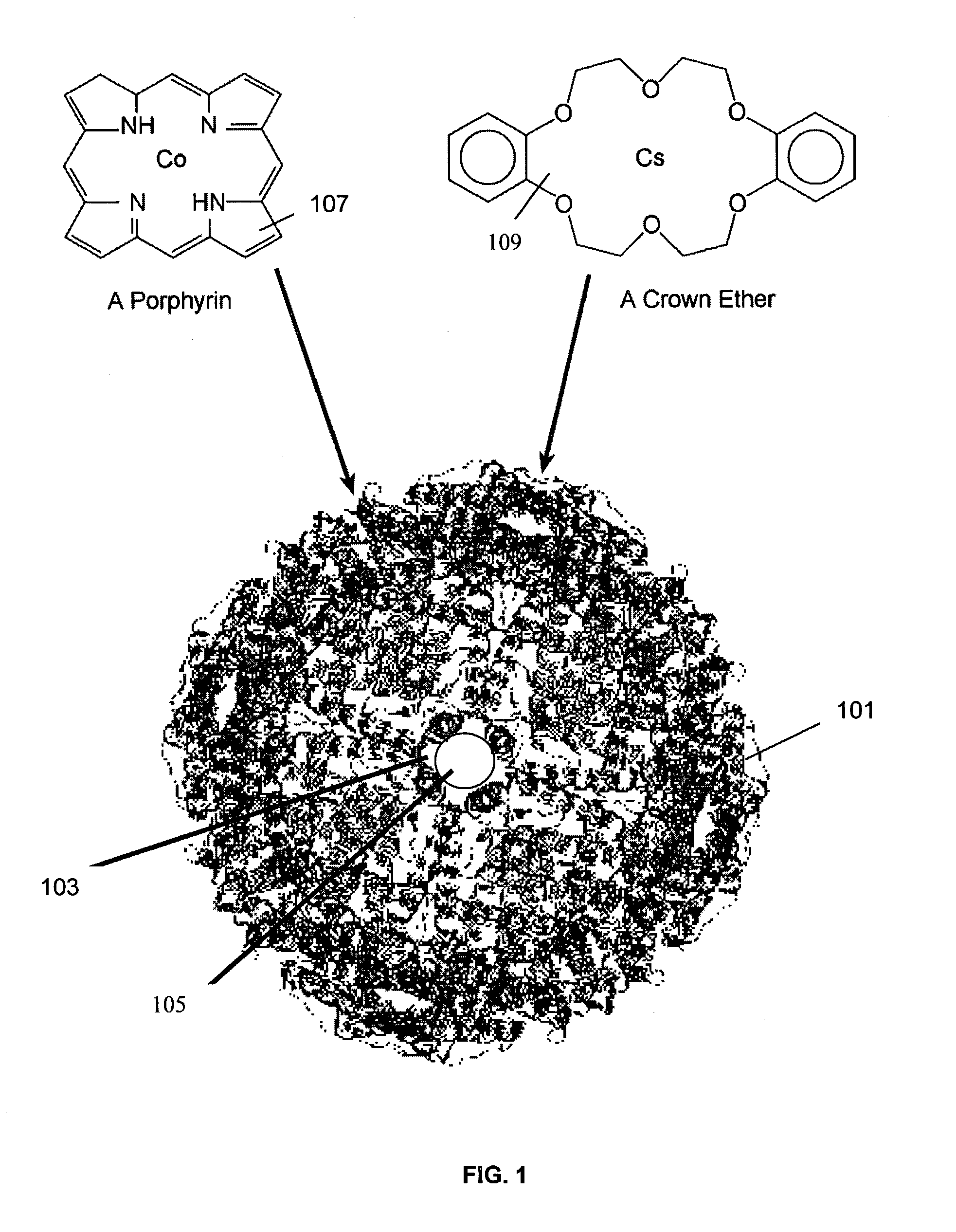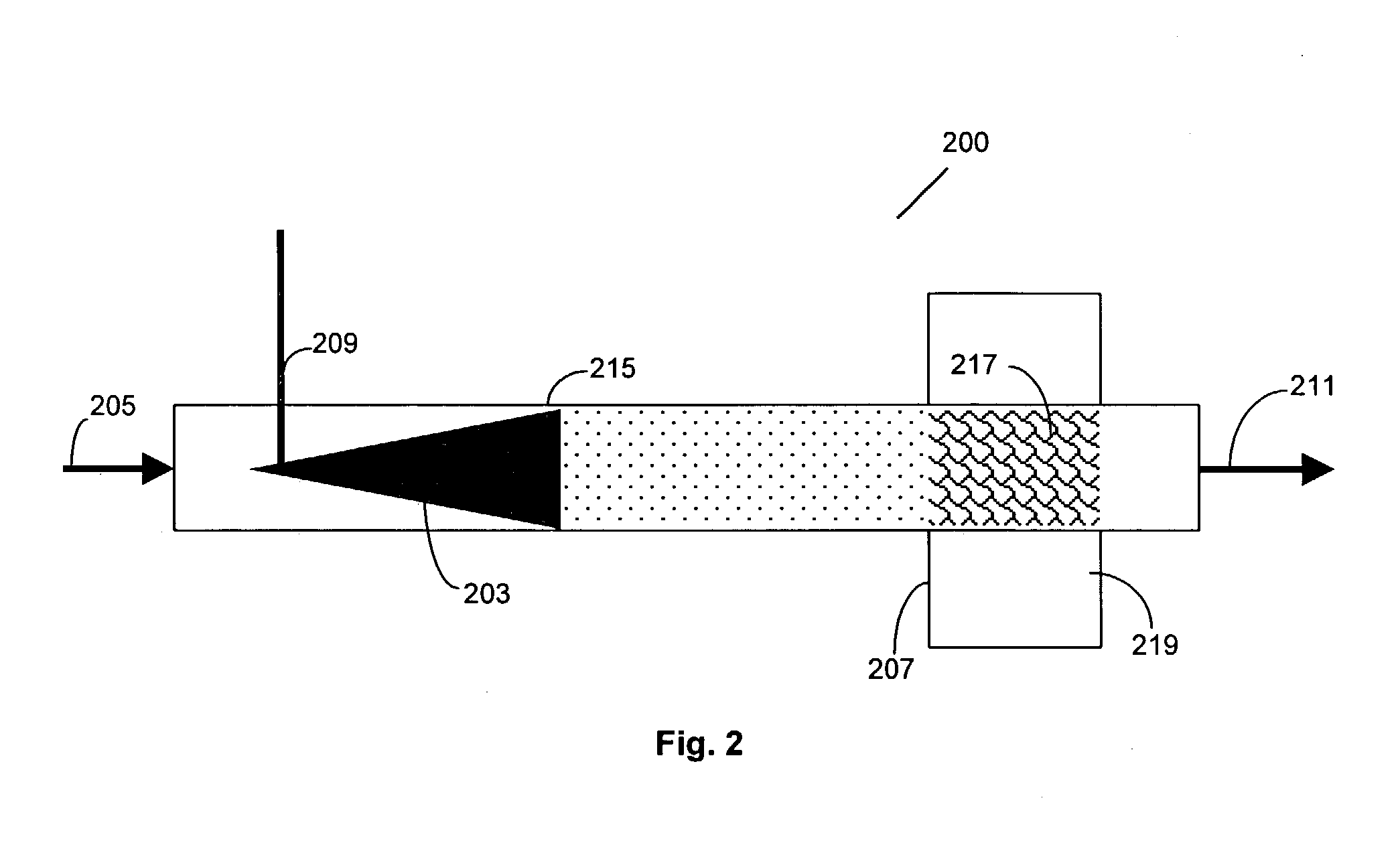Magnetic molecules: a process utilizing functionalized magnetic ferritins for the selective removal of contaminants from solution by magnetic filtration
a technology of magnetic ferritin and magnetic molecule, applied in the direction of magnets, nuclear elements, peptides, etc., can solve the problems of inability to selectively remove certain target impurities, waste volume is excessive, problems to overcome, etc., and achieve the effect of easy flushing out of the filter
- Summary
- Abstract
- Description
- Claims
- Application Information
AI Technical Summary
Benefits of technology
Problems solved by technology
Method used
Image
Examples
Embodiment Construction
[0016]The inventive magnetic molecules have selective ion exchange properties which bond to specific contaminant ions in a solution. The size of the inventive magnetic molecules is much smaller than prior art magnetic particles which improves the decontamination efficiency. The magnetic molecules are formed by inserting a highly magnetic core into a ferritin structure and bonding an ion exchange function to the a ferritin structure. The ferritin magnetic molecules have a diameter about three orders of magnitude less than that the prior art magnetic particles. The smaller magnetic molecule size is essential to absorption capacity because the contaminant ions are only absorbed onto the exposed surfaces of the magnetic molecules. The smaller diameter inventive magnetic molecules have a much greater surface area to volume ratio than prior art magnetic particles which greatly increases the smaller magnetic molecule's capacity for absorbing contaminant ions.
[0017]In order to sythesize sma...
PUM
| Property | Measurement | Unit |
|---|---|---|
| Mass | aaaaa | aaaaa |
| Mass | aaaaa | aaaaa |
| Mass | aaaaa | aaaaa |
Abstract
Description
Claims
Application Information
 Login to View More
Login to View More - R&D Engineer
- R&D Manager
- IP Professional
- Industry Leading Data Capabilities
- Powerful AI technology
- Patent DNA Extraction
Browse by: Latest US Patents, China's latest patents, Technical Efficacy Thesaurus, Application Domain, Technology Topic, Popular Technical Reports.
© 2024 PatSnap. All rights reserved.Legal|Privacy policy|Modern Slavery Act Transparency Statement|Sitemap|About US| Contact US: help@patsnap.com










